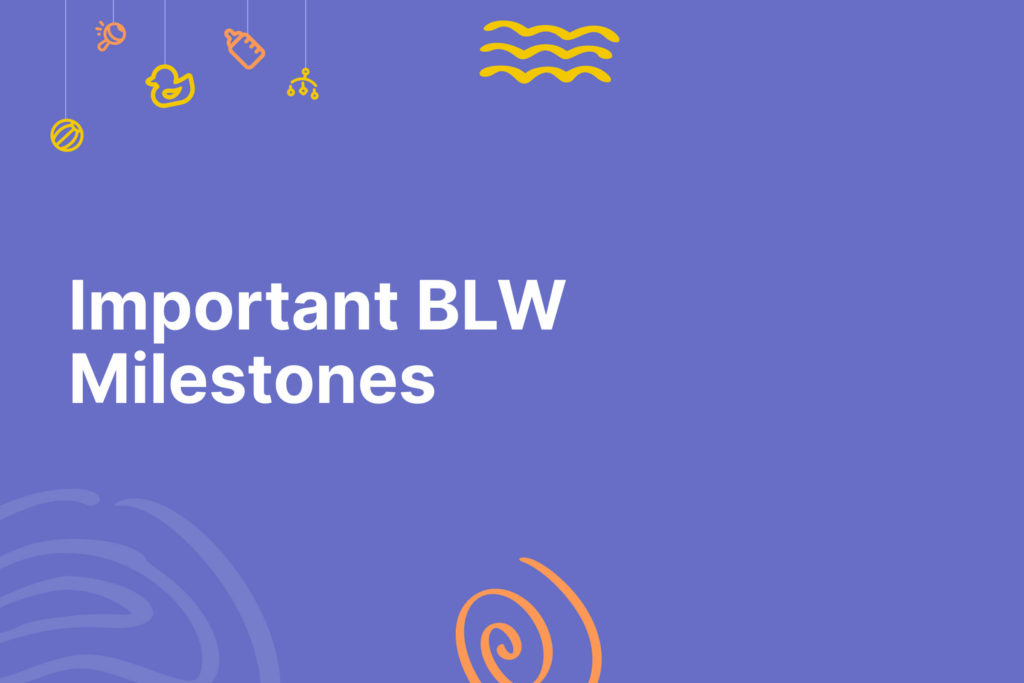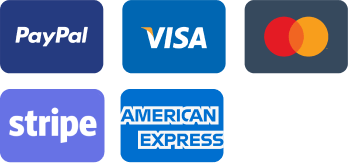Introducing solid foods to your baby can be an exciting time, but it can also be a stressful experience for parents. Traditionally, parents have started their babies on purees and spoon-fed them until they were ready for finger foods. However, a newer approach called baby-led weaning (BLW) is gaining popularity in Malaysia and around the world.
This method involves letting your baby feed themselves from the beginning with finger foods. In this article, we’ll explore what baby-led weaning is, how to do it, and the benefits it can offer.
What is Baby-Led Weaning?
Baby-led weaning is a method of introducing solid foods to babies that involves offering finger foods instead of purees and letting babies feed themselves. It is based on the principle that babies are capable of feeding themselves and can learn to regulate their own appetites.
The concept of baby-led weaning was popularized by Gill Rapley, a British health visitor and author of the book “Baby-Led Weaning: The Essential Guide to Introducing Solid Foods.” It has since gained a following in Malaysia and around the world.
The principles of baby-led weaning include:
- Letting babies feed themselves from the beginning with finger foods
- Offering a variety of healthy foods to promote a balanced diet
- Letting babies decide how much to eat and when to stop
- Allowing babies to explore and experiment with food at their own pace
Benefits of Baby-Led Weaning in Malaysia
Developmental benefits
Baby-led weaning can offer several developmental benefits, including:
- Improved hand-eye coordination and fine motor skills
- Increased oral motor skills and jaw development
- Improved sensory development and exploration of different tastes and textures
Nutritional benefits
Baby-led weaning can also offer several nutritional benefits, including:
- Exposure to a wider variety of healthy foods
- Development of healthy eating habits and self-regulation of appetite
- Decreased risk of obesity later in life
Psychological benefits
Baby-led weaning can also offer several psychological benefits, including:
- Increased self-confidence and independence in babies
- Improved parent-baby bonding and communication during mealtime
- Decreased picky eating and food aversions later in life
Family benefits
Baby-led weaning can also offer several benefits for the family, including:
- Simplification of meal preparation and clean-up
- Reduced stress and anxiety around mealtime
- Increased enjoyment and socialization during mealtime
Baby-Led Weaning (BLW) Milestones

The following table provides a comprehensive guide to Baby-led weaning milestones and foods that babies can consume at different stages:
| Age | Developmental Milestones | Feeding Milestones |
|---|---|---|
| 4-6 months | Sits with support | Introduce iron-fortified infant cereal with breastmilk or formula, then mashed or soft foods |
| 6-8 months | Sits unsupported, reaches for and grabs objects | Offer soft, cooked vegetables and fruits in small, bite-size pieces |
| 8-10 months | Begins to chew with gums, may have one or two teeth | Offer soft, cooked proteins such as ground meats, tofu, and beans, in small pieces |
| 10-12 months | Can pick up and self-feed with fingers, uses pincer grasp | Offer a wider variety of foods in small, bite-size pieces, including whole grain breads, pasta, and finger foods such as cheese cubes and small pieces of cooked egg |
How to Do Baby-Led Weaning in Malaysia

When to start
According to the American Academy of Pediatrics, babies can start solids between 4-6 months old when they are developmentally ready. Signs of readiness include being able to sit up unassisted, showing an interest in food, and having lost the tongue-thrust reflex.
What foods to offer
When starting baby-led weaning, it is important to offer a variety of healthy foods, including:
- Soft fruits and vegetables, such as cooked sweet potato, avocado, and banana
- Soft-cooked meats and fish, such as chicken and salmon
- Cooked grains, such as rice and quinoa
- Dairy products, such as cheese and yogurt
How to prepare foods
When preparing foods for baby-led weaning, it is important to make sure they are soft and cut into appropriate sizes for your baby to pick up and eat. Some tips for preparation include:
- Steaming or boiling vegetables until they are soft
- Cooking meats and fish until they are tender and can be easily flaked with a fork
- Cutting foods into small, bite-sized pieces that are easy for your baby to pick up and eat
How to serve BLW friendly foods
When serving foods for baby-led weaning, it is important to offer them in a way that your baby can easily pick up and eat. Some tips for serving foods include:
- Placing foods on a highchair tray or plate that your baby can reach and pick up
- Offering foods in a variety of shapes and sizes to promote exploration and experimentation
- Allowing your baby to feed themselves and decide how much to eat
How to handle choking
Choking can be a concern with baby-led weaning, but it is important to know that babies have a strong gag reflex that helps protect them from choking. Some tips for handling choking include:
- Watching your baby closely during mealtime
- Cutting foods into appropriate sizes to prevent choking
- Knowing the signs of choking and how to perform infant CPR
How to transition to family foods
As your baby grows and develops, they will eventually be ready to eat the same foods as the rest of the family. Some tips for transitioning to family foods include:
- Gradually introducing new foods and flavors
- Offering a variety of healthy options at mealtime
- Allowing your baby to continue to feed themselves and regulate their own appetite
Precautions to Take
While baby-led weaning can offer many benefits, there are also some precautions to take to ensure your baby’s safety and nutritional needs are met.
Choking hazards
Choking can be a concern with baby-led weaning, so it is important to cut foods into appropriate sizes and supervise your baby closely during mealtime.
Nutritional concerns
It is important to make sure your baby is getting all the nutrients they need, so offering a variety of healthy foods and consulting with a pediatrician can be helpful.
Messiness
Baby-led weaning can be messy, so using a bib and a highchair with a tray can help make clean-up easier.
Parental anxiety
Parents may experience anxiety or worry during mealtime, but trusting your baby’s ability to self-regulate and consulting with a healthcare provider can help alleviate concerns.
Baby-Led Weaning Recipes
Here are some easy baby-led weaning recipes to try at home:
Soft vegetable sticks
Cut cooked vegetables, such as sweet potato and carrot, into long, thin sticks for your baby to pick up and eat.
Meatballs
Mix ground meat with cooked vegetables and form into small meatballs for your baby to pick up and eat.
Omelet fingers
Whisk eggs and pour into a greased baking dish. Bake until set and cut into finger-sized pieces for your baby to pick up and eat.
Pancakes
Mix pancake batter and pour onto a griddle or skillet. Cook until golden brown and cut into small pieces for your baby to pick up and eat.
Fruits and yogurt dip
Cut soft fruits, such as berries and melon, into small pieces and serve with a yogurt dip for your baby to dip and eat.
Frequently Asked Questions For Baby-Led Meaning in Malaysia
What are the best first foods for baby-led weaning?
Soft fruits and vegetables, such as cooked sweet potato and avocado, and soft-cooked meats and fish, such as chicken and salmon, are good first foods for baby-led weaning.
Is baby-led weaning safe?
While there are some precautions to take to ensure your baby’s safety, baby-led weaning can be a safe and healthy way to introduce solid foods.
How can I make sure my baby is getting enough nutrition with baby-led weaning?
Offering a variety of healthy foods and consulting with a pediatrician can help ensure your baby is getting all the nutrients they need.
Can I combine baby-led weaning with spoon-feeding?
Yes, you can combine baby-led weaning with spoon-feeding if that works best for your family.
Will my baby choke if I try baby-led weaning?
While choking can be a concern with baby-led weaning, babies have a strong gag reflex that helps protect them from choking.
Final thoughts on baby-led weaning in Malaysia
Baby-led weaning can be a safe and healthy way to introduce solid foods to your baby. By offering a variety of healthy foods and letting your baby feed themselves, you can promote developmental, nutritional, psychological, and family benefits.
While there are some precautions to take, baby-led weaning can be an enjoyable and stress-free way to approach mealtime with your baby.
If you are interested to read more, please refer to below sources
- The American Academy of Pediatrics. (2021). Starting Solid Foods. Healthy Children.
- Malaysian Dietitians’ Association. (2021). Baby-led Weaning: What you need to know.
- The Ministry of Health Malaysia. (2015). Malaysian Dietary Guidelines for Children and Adolescents.
- British Nutrition Foundation (2021)











